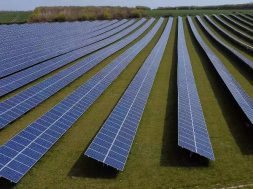
Researchers find ways to make solar energy affordable
In a recent study, researchers used data science to determine and predict the effects of exposure to weather and other conditions on materials in solar panels. The study, performed by a team of researchers from Case Western Reserve University and Gebze Technical University (GTU) in Turkey, has been in the journal PLOS ONE. Using data science to predict the deterioration of such materials could lead to finding new ways to extend their lifetime, the researchers say. “This makes the cost of solar energy — in this case — better and easier to understand,” said Case Western Reserve Professor Laura Bruckman, who directed the study with Abdulkerim Gok, a research associate at GTU formerly with Case Western Reserve.
“If solar modules last 50 years, and science can back that up,” she said, “it will make solar energy more affordable by decreasing the dollar-per-watt of electricity generation.” The study is titled “Predictive models of poly (ethylene-terephthalate) film degradation under multi-factor accelerated weathering exposures.” Their study combines engineering epidemiology and statistical-data analytics to develop predictive models for environmentally exposed applications. While the solar energy market continues to expand, the reliability and sustainability of solar energy systems remains a challenge. The stability of polymeric components is critical for the service lifetime of solar panels during outdoor use.
PET (polyethylene terephthalate) — what water bottles are made of — is a common polymer. In solar panels, the polymer on the back of the module is an environmental barrier and protects people from getting an electrical shock if they touched a module. In the SDLE Research Center at Case Western Reserve, PET samples were exposed to various accelerated weathering conditions. Fixed- and mixed-effects modeling, under the guidance of Case Western Reserve Professor Jiayang Sun, in the Department of Epidemiology and Biostatistics, were used to predict degradation responses of different PET films. The journal article explains how comprehensive data-science methods were applied to a material-science degradation problem of PET films used as an environmental barrier in solar panels. The research explains the degradation of PET, which is necessary for lifetime prediction of solar panels.
















